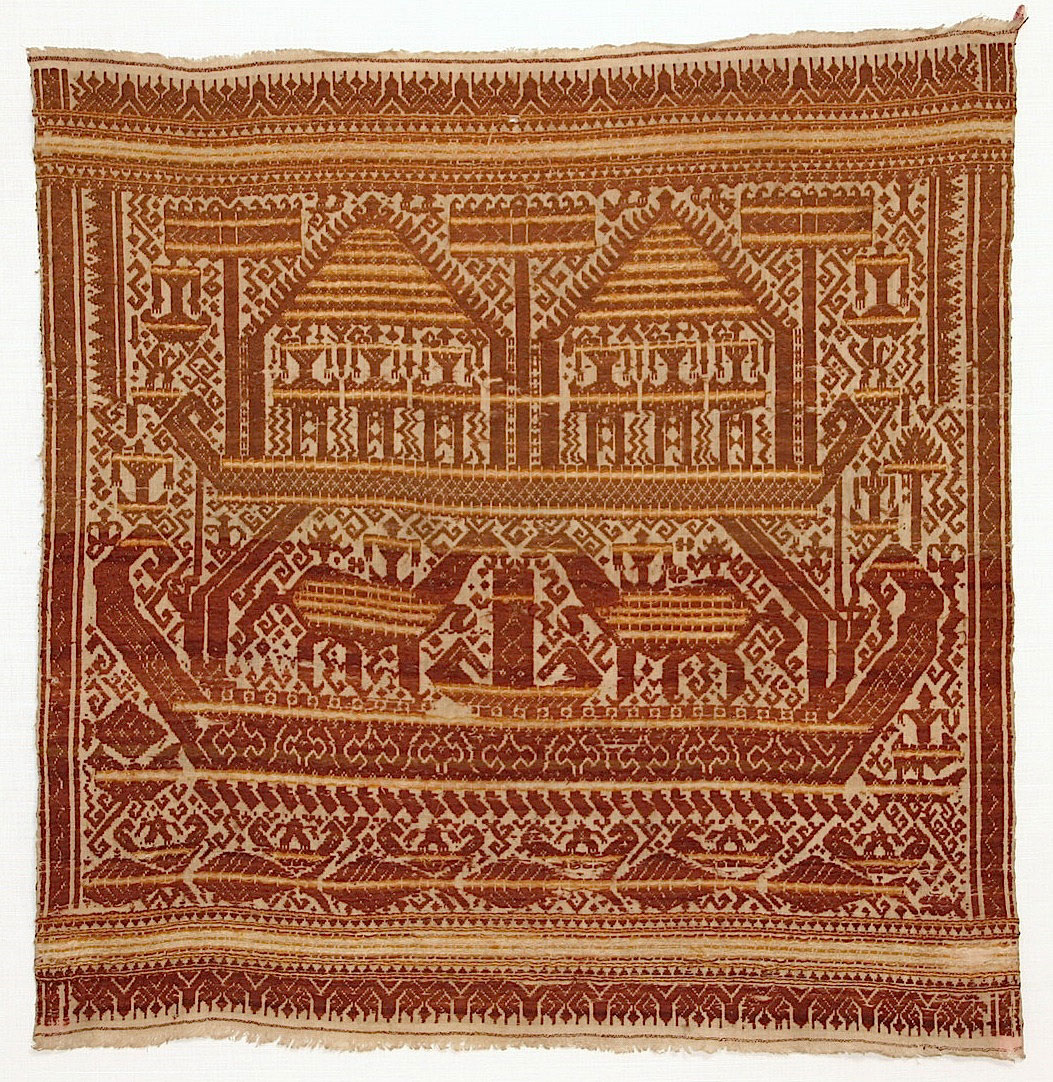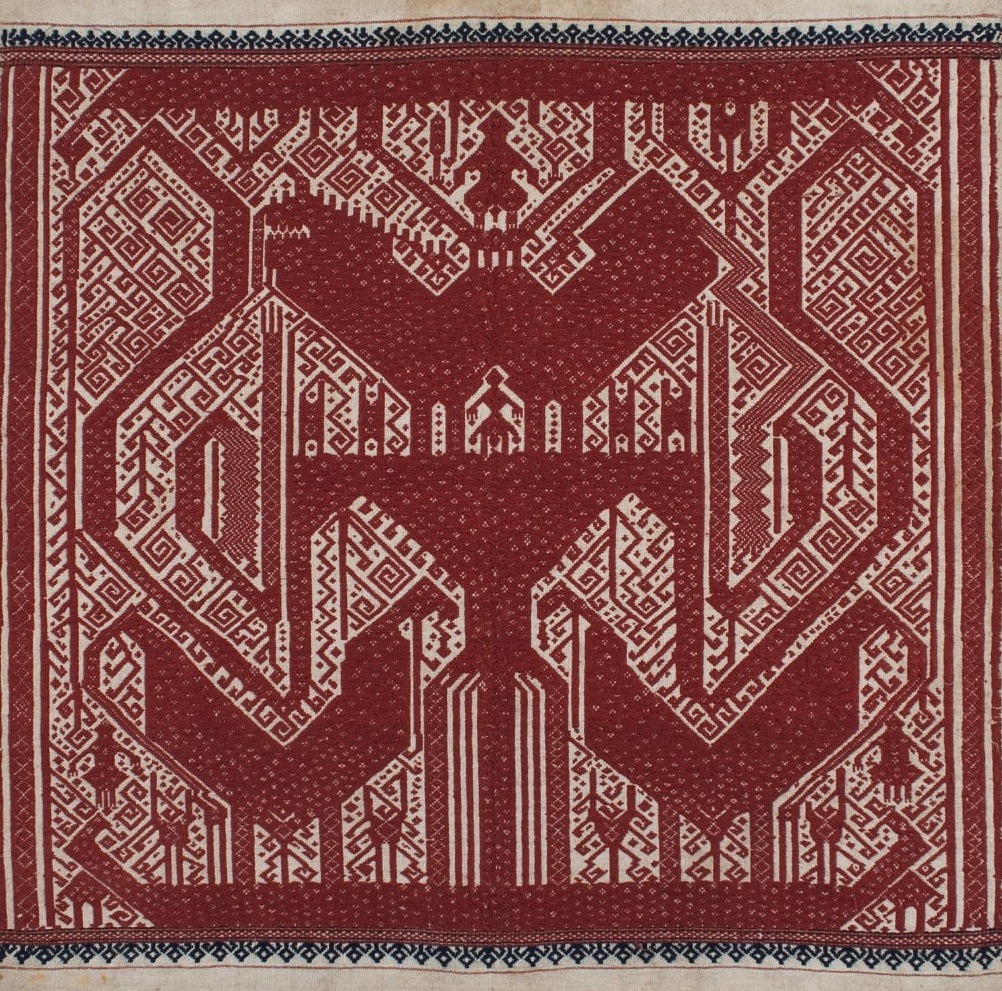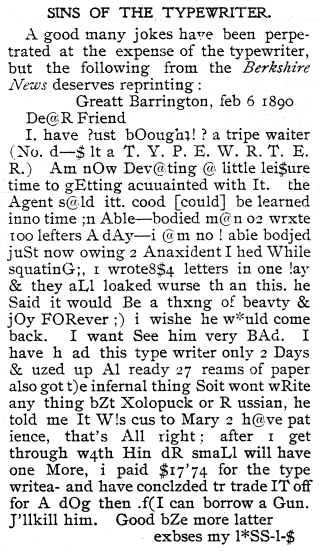


Ceremonial Textile (Tampan) from Indonesia, Sumatra, Lampung, 19th century.
Anchor Stone Blocks are stone Construction set made in Rudolstadt, Germany used as a construction toy, circa 1880.
Tibetan tantric patchwork composed primarily of Ming era textile fragments, from the 19th century, via.
In 1876 these patterns were bought from Tehran to be used for the Victoria and Albert Museum in London. These square kufic, and the ones at the bottom symbolize Ali, Muhammad and Ali. Each written four times.
More at kufic.info

Leetspeak and possible emoticons from 1890. Found by Koichi Yasuoka, who writes:
The article shown right is from The Typewriter World (Chicago), Vol.I, No.2 (October 1897), p.46, which I found in The New York Public Library. You see the sentense “he Said it would Be a thxng of beavty & jOy FORever” is followed by a combination of punctuation marks, a semicolon and a right parenthesis, which is one of the so-called emoticons nowadays. I cannot make sure that it was really intended to represent a winking smile, but I need to check Berkshire News (Great Barrington, Massachusetts) of February 6, 1890. How do you think about this?
The Linotype (1886) was one of the main printing techniques of the 20th century. With this machine, it was possible to produce metal lines to print, instead of doing it letter-by-letter. It didn’t use a qwerty keyboard, and there was no shift key. The keyboard was organized according to the popularity of the characters.
There is a movie about this machine, and there’s some clips from it here.